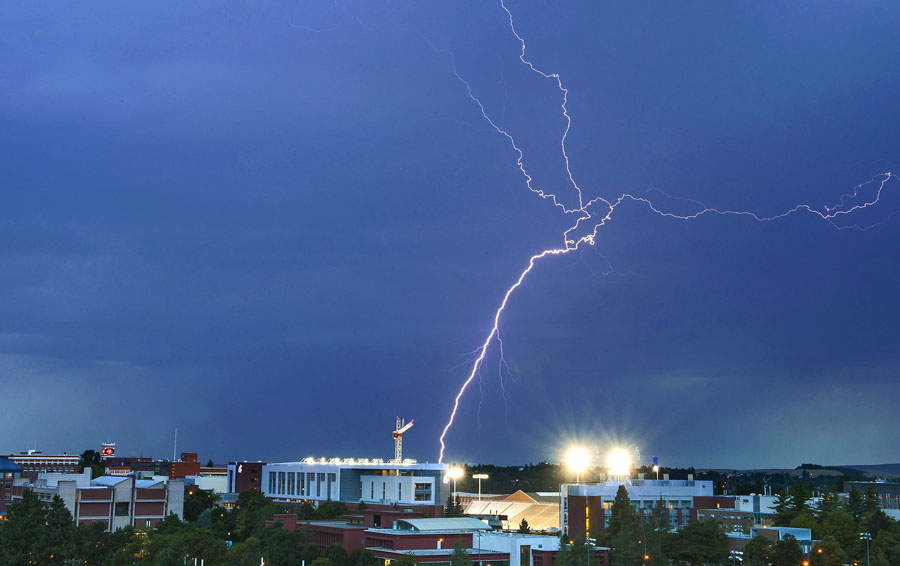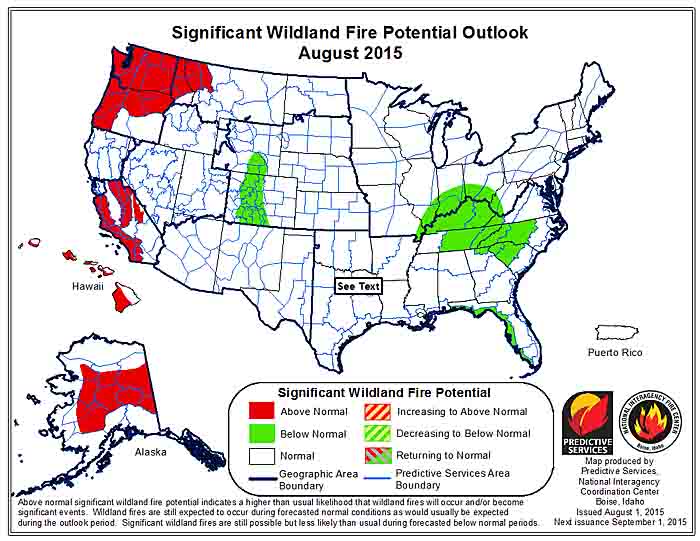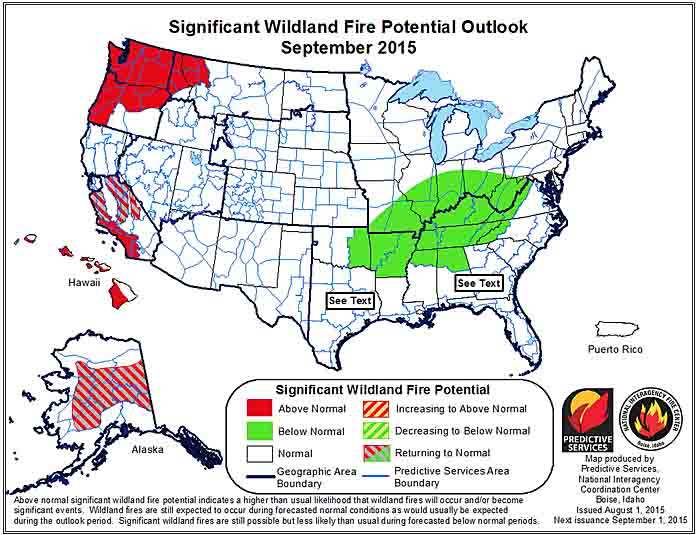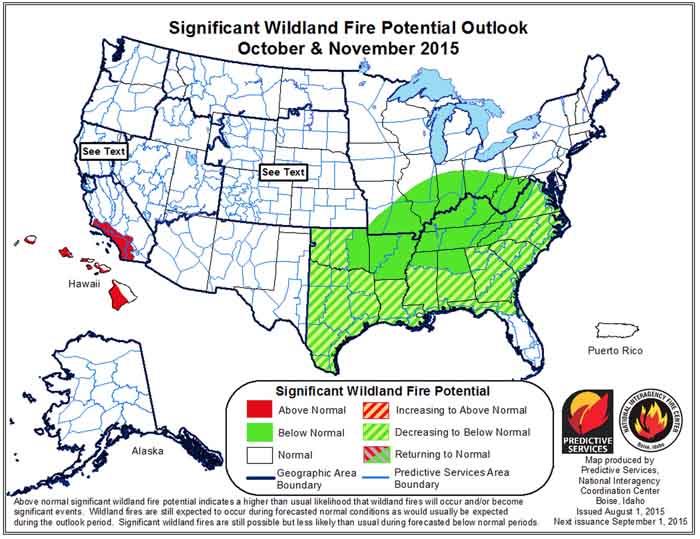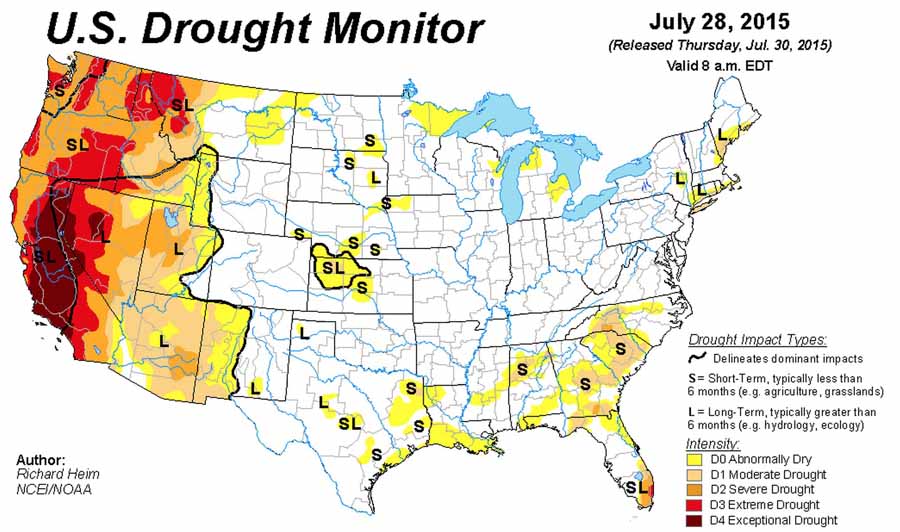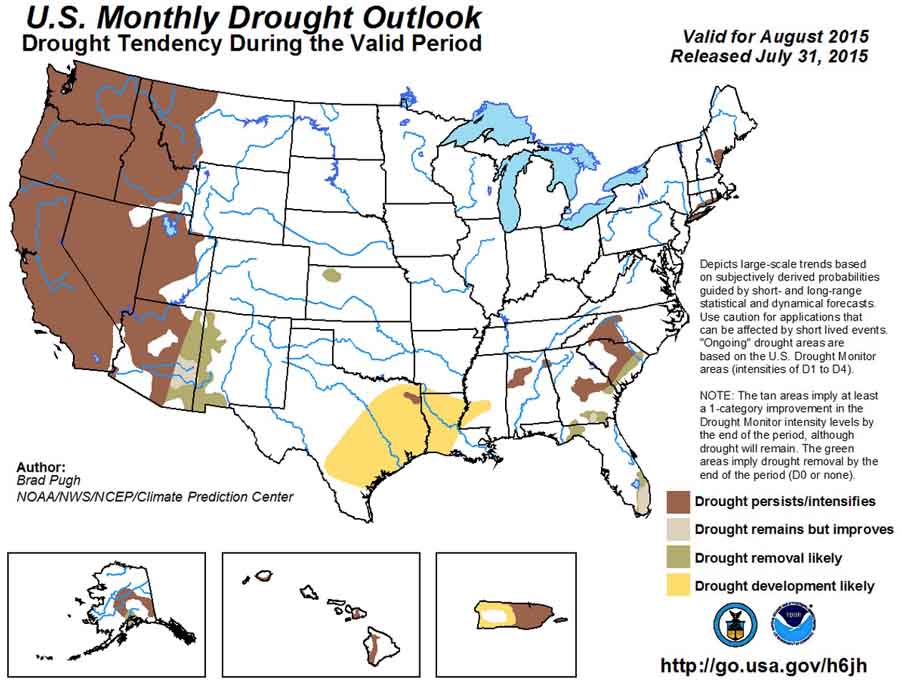The Predictive Services section at the National Interagency Fire Center has issued their Wildland Fire Potential Outlook for September through December, 2015. The data represents the cumulative forecasts of the ten Geographic Area Predictive Services Units and the National Predictive Services Unit.
If their forecasts are accurate, above normal wildfire potential will continue in the Northwest and southern California through September, but beginning in October it will exist only in southern California, and temporarily in a portion of central Texas.
Here are the highlights from their outlook.
September
- Significant fire potential will remain above normal across much of Washington, northeastern Oregon, northern Idaho and northwestern Montana.
- Above normal significant fire potential will continue across the mountains of southern California.
- Below normal fire potential will occur over the Mid-Mississippi and Ohio Valleys and most of Florida.
October
- The southern California coastal region will remain in above normal fire potential while the central coast and the Sierras return to normal fire potential.
- Below normal fire potential will spread across the Ohio, Tennessee and Mid-Mississippi Valleys.
November through December
- Southern California will return to normal in November.
- Below normal fire potential will spread over the coastal states from Texas to North Carolina.




